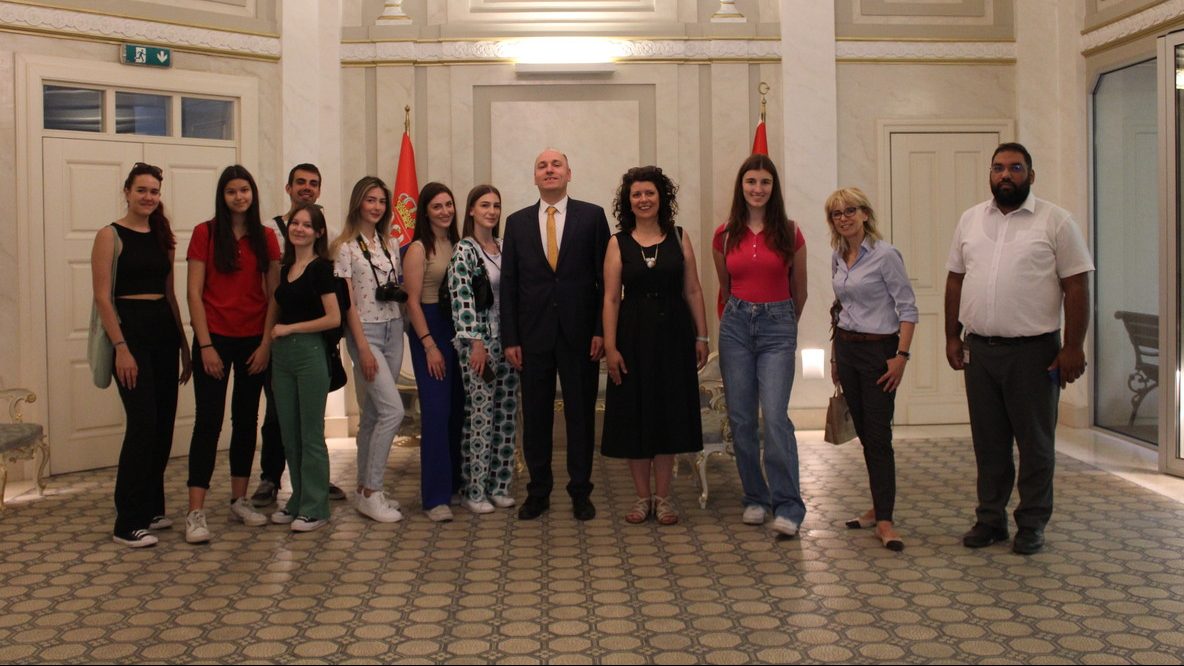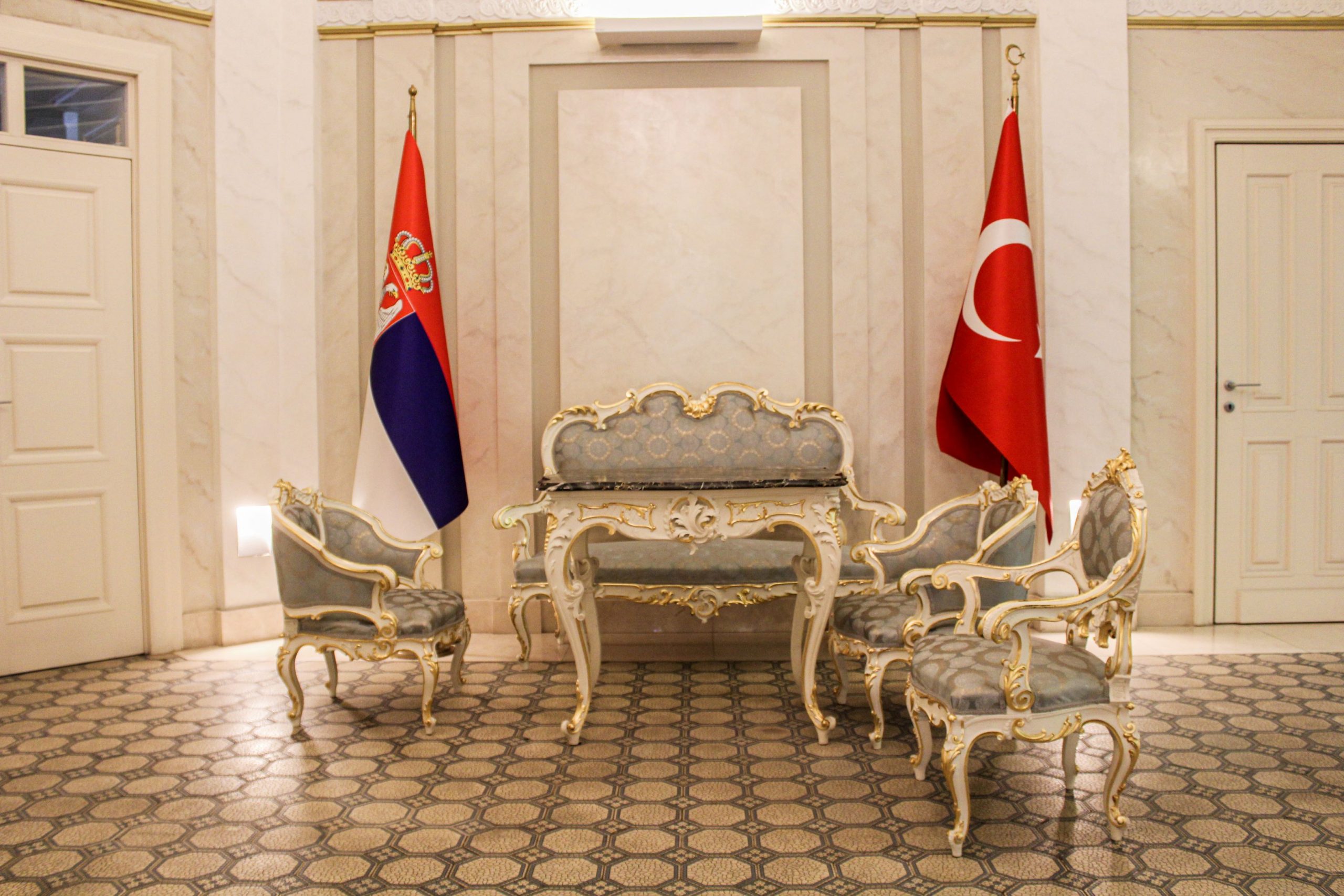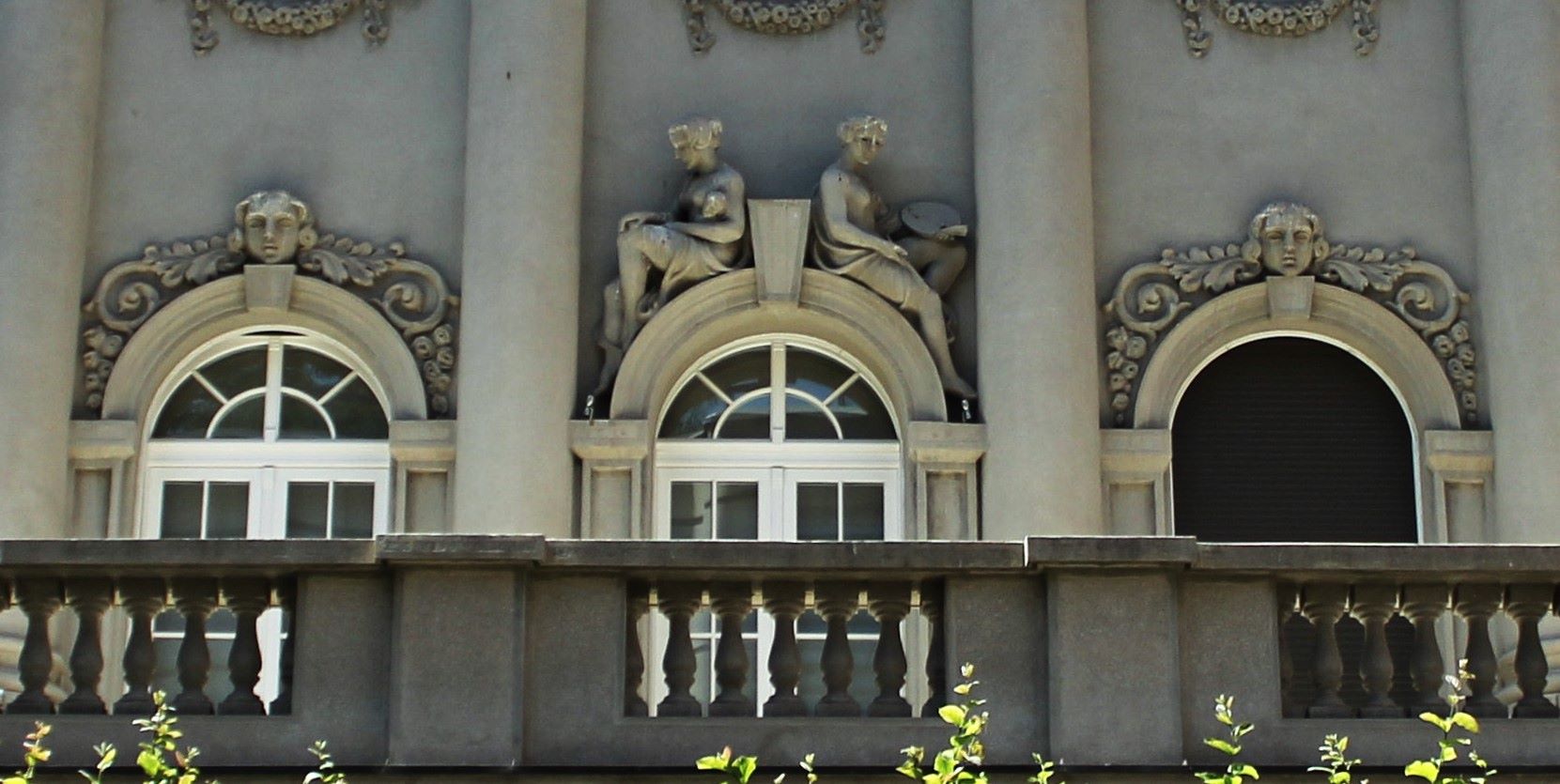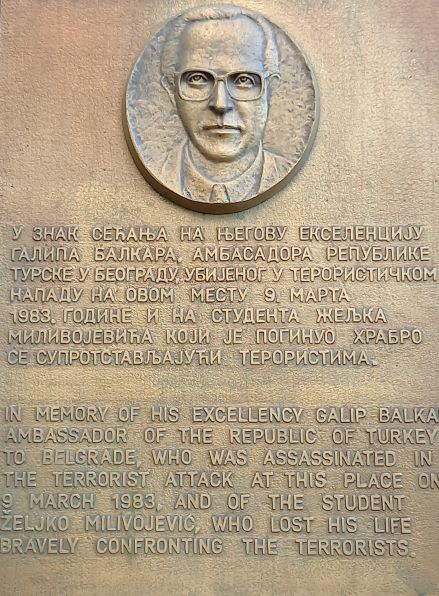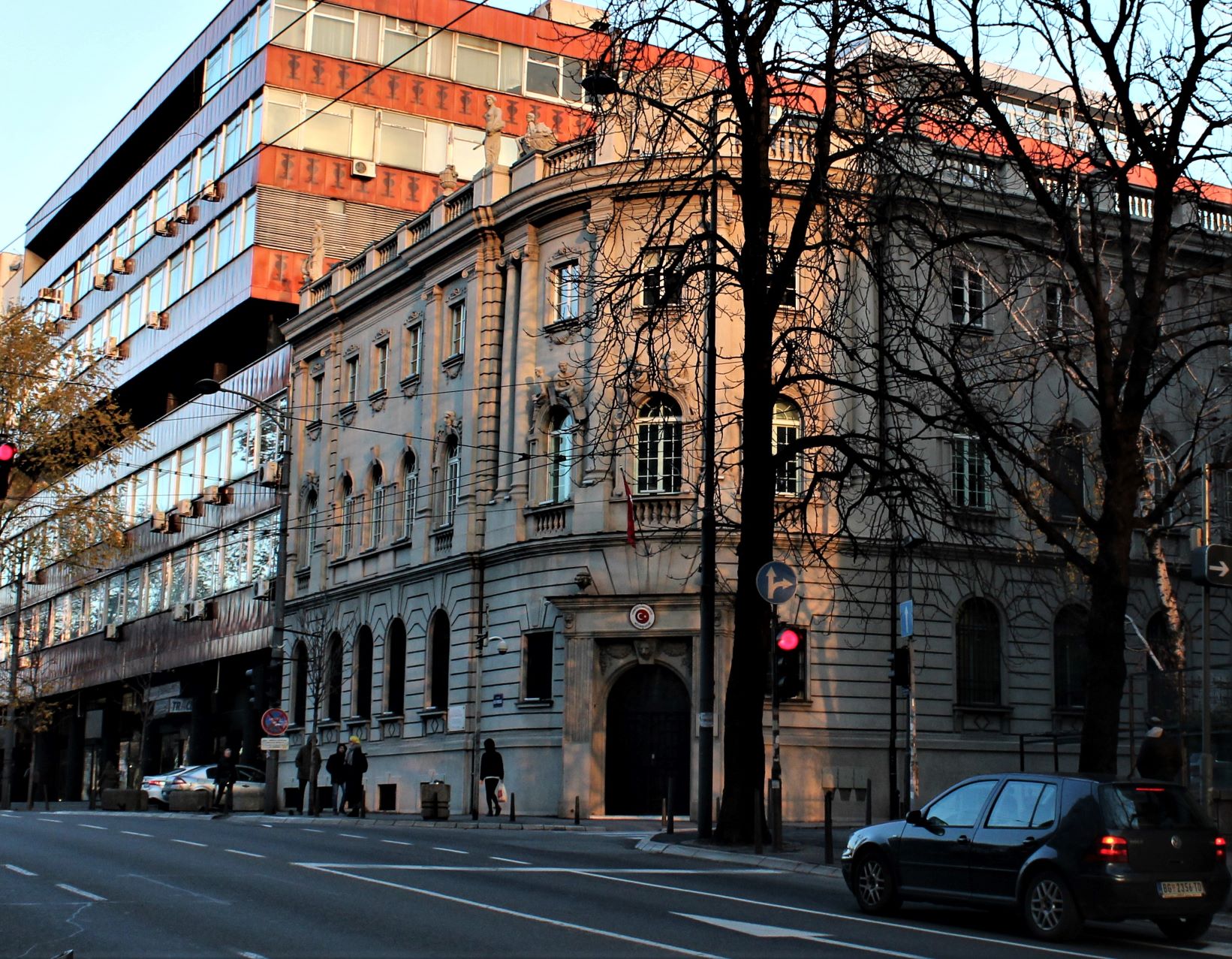WHERE IS IT?
The Embassy of the Republic of Turkey is located at the corner of Kneza Miloša and Krunska streets in building number 1.
THE HISTORY
In the current building, the embassy has been located since 1933. The renovation of the building began in 2014, and two years later, it was opened for operations. The present-day Turkish Embassy building was formerly the Vračar Cooperative's property, specifically owned by the Veljković family, who were its majority shareholders.
In 1912, Stojan Veljković purchased the plot on which there was a modest house where J. J. Zmaj had stayed for some time. Stojan Veljković later sold it to the Vračar Cooperative, in which the Veljković family held the majority stake.

Figura žene sa srpom i klasjem žita -Poljoprivreda i dečak sa korpom voća kao rogom izobilja na balustradi prema ulici Kneza Miloša
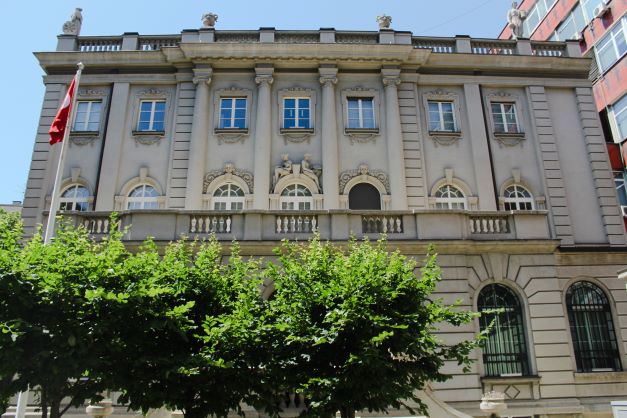
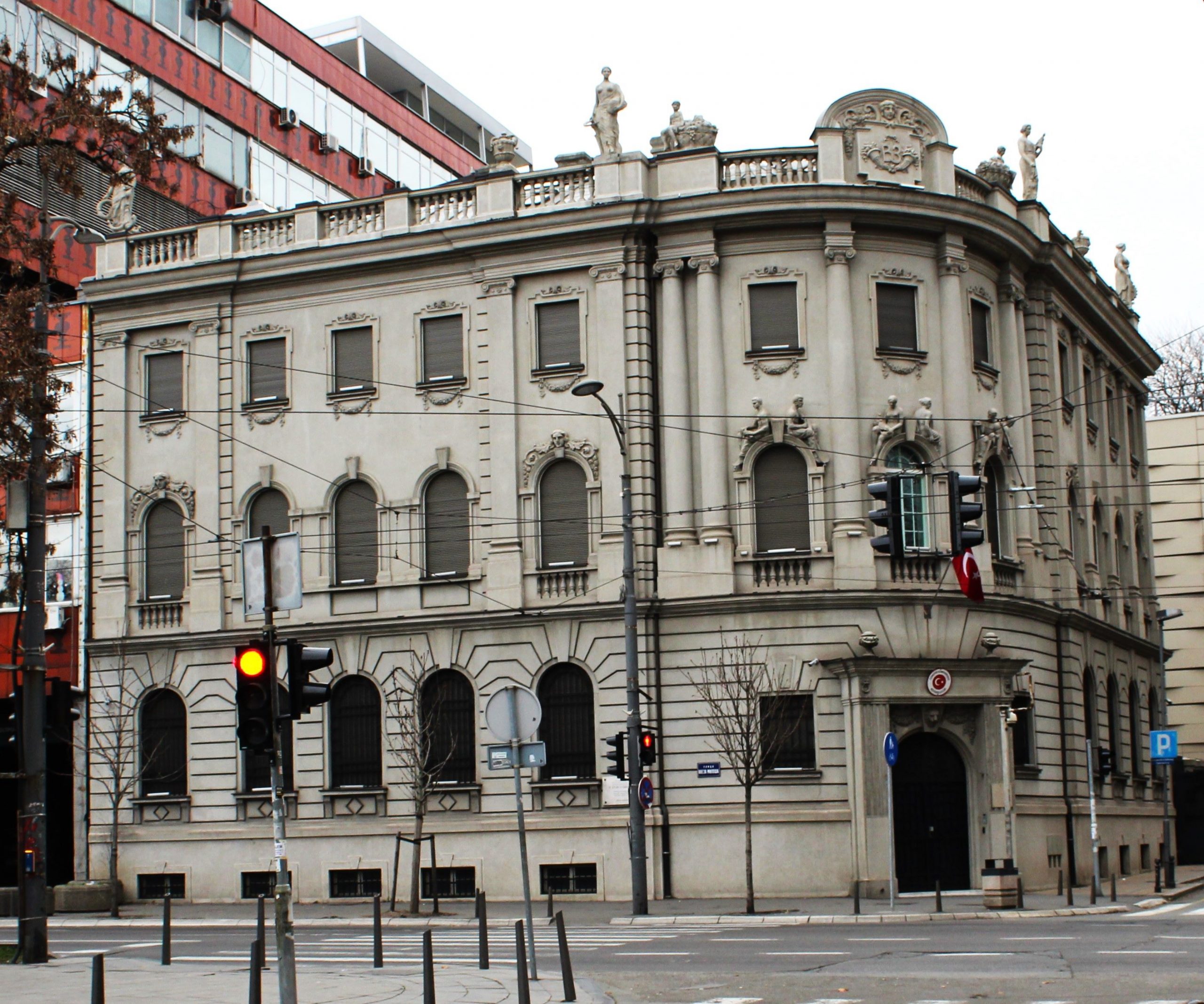
THE DESIGN
This building was designed by architect Živojin Nikolić in 1924, in the style of academic classicism, featuring five prominent facade statues atop the building. These statues were crafted by Vukosava Velimirović, the first Serbian female sculptor. The sculptures represent Maritime (a female figure with a ship's anchor), Agriculture (a female figure with a sickle and sheaf of wheat), Household (a female figure with a distaff), Industry (a female figure with a wheel), and Viticulture (a female figure with a jug and a basket of fruit) facing the courtyard facade.
Smaller figurative compositions above the windows on the first floor facing Kneza Miloša Street symbolize agriculture, while two female figures on the corner represent brotherhood, and two male figures facing Krunska Street symbolize craftsmanship. A pair of female figures is repeated towards the courtyard side, symbolizing art. Smaller sculptures on the facade were created by Živojin Lukić.
Vojislav Veljković, son of Stojan Veljković, was responsible for organizing an exhibition of sculptures and casts of Renaissance works in the garden of this building. He was one of the first holders of a law degree in Serbia, serving as the Minister of Finance who initiated the printing of dinars. Veljković was also a significant patron of the arts. During his stay in Paris, he commissioned the creation of casts, which was a costly endeavor. Veljković had to obtain permission from Pope Pius XI and ensure special conditions for the preservation of bronze casts. For replicas of works like "The Thinker," "Moses," statues of "Day and Night," and other artworks, Veljković built a museum known as the Veljković Pavilion on Birčaninova Street.
Vojislav Veljković passed away in 1931, not witnessing the completion of the building on Birčaninova. After WWII, the museum and its collection were nationalized, and the collection was dispersed. Of the 21 replicas that arrived by train from France, 18 statues were preserved in Belgrade and handed over to the Faculty of Fine Arts, while two smaller pieces are located in the art school on Šumatovačka Street. The collection included not only sculptures but also paintings and works of applied arts such as porcelain and carpets.
The interior of the embassy has undergone partial modifications through a reconstruction carried out in 2014. The entrance to the embassy is located at the corner of Kneza Miloša and Krunska streets, as well as from the courtyard side. In this part of the embassy, there is a representative area with a reception salon and a memorial exhibition dedicated to Ambassador Galip Balkar. Ambassador Balkar served as the Turkish Ambassador to the SFRY and was tragically killed in a terrorist attack on March 9, 1983, in the center of Belgrade. The attack occurred on Resavska Street when the ambassador's car stopped at a traffic light. A memorial plaque in honor of Turkish Ambassador Galip Balkar is now located on the building in Resavska Street.

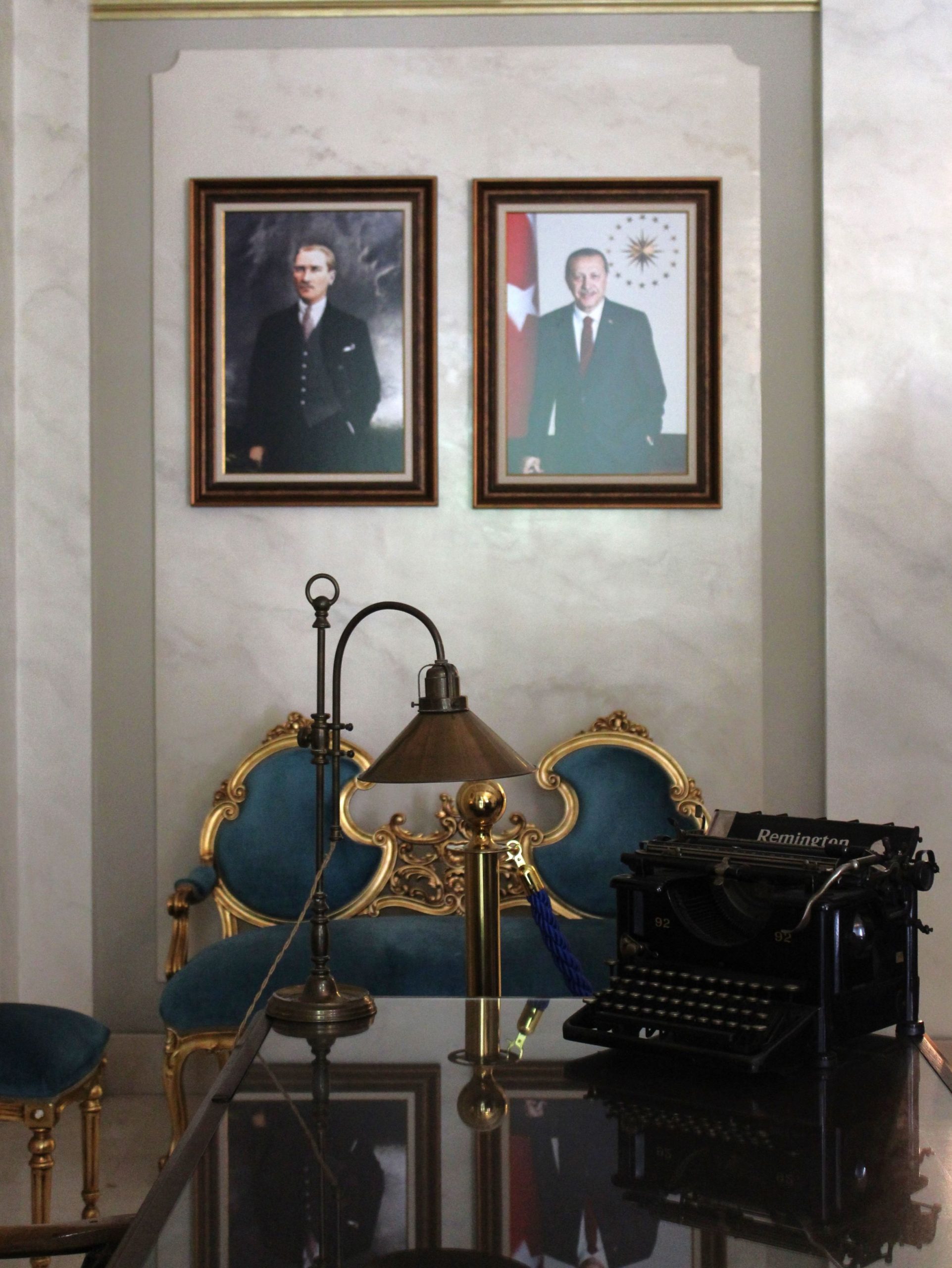

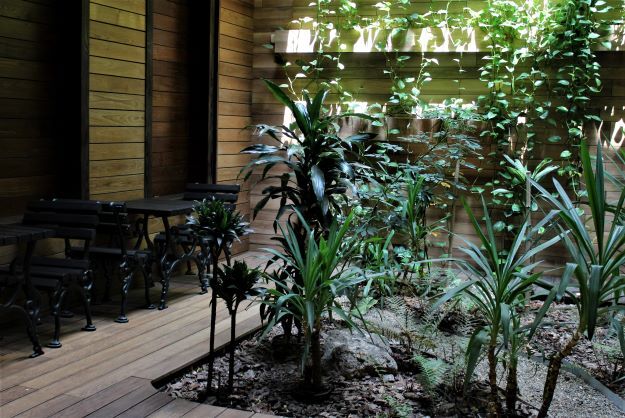

BILATERALNI ODNOSI
Saradnja Srbije i Turske počinje drugom polovinom 19. veka. Bilateralni odnosi Kneževine Srbije i Turske su uspostavljeni 1879. godine.
Posle sticanja nezavisnosti na Berlinskom kongresu 1978. godine, Srbija dobija pravo na predstavnika u Carigradu. Jovan Antić je bio prvi srpski predstavnik, a prvi predstavnik nezavisne Srbije je bio političar i diplomata FIlip Hristić. Turska 1886. godine za predstavnika u Beogradu postavlja Jusufa Ziju Pašu.
Početkom 20. veka, odloženo je obnavljanje diplomatskih odnosa sa Turskom. Na to su uticali Prvi svetski rat, Grčko-Turski rat i nepotpisani međunarodni ugovori.
U periodu kraljevine SHS, diplomatski odnosi sa Turskom ponovo jačaju. Turska 1925. godine za poslanika šalje Jusuf Hikmet Beja. Godine 1926. država SHS u Carigrad kao poslanika stavlja Tihomira Popovića. Formiranjem Balkanskog pakta 1934. godine, Jugoslavija je sa Turskom, Grčkom i Rumunijom napravila vojno-politički savez gde su se članice međusobno pomagale. Taj pakt je doprineo tome da dodatno učvrstimo veze sa navedenim saradnicima. Zbog toga su 1939. diplomatski odnosi podignuti na nivo ambasada, pa je te godine prvi ambasador postao Ilija Šumenković, dok je prvi turski ambasador bio Tefik Kamil Koperler.
Saradnja Turske i SFRJ u posleratnom periodu nastavila je da se razvija, a odnosi sa Turskom su posebno napredovali početkom 21. veka.
Učesnici projekta BEOgradska avanTURA imali su priliku da obidju ambasadu Republike Turske 19. 06. 2022. godine. Tom prilikom su razgledali zgradu ambasade uz stručno vodjenje savetnika za obrazovanje ambasade Turske Mehmeta Jilmazata i imali mogućnost da slikaju sve prostorije i umetničke vrednosti u njima.

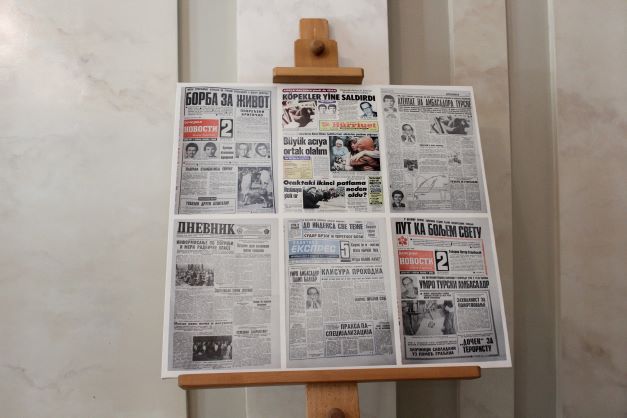

Written by Angelina Mladenović i Marija Popović

